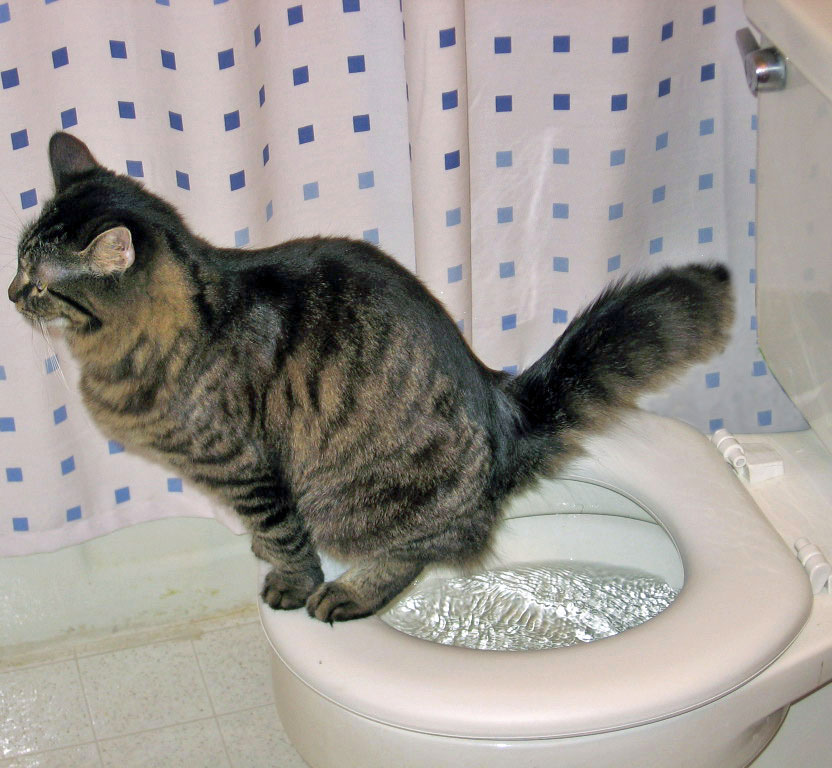How do you actually feel about How to Dispose of Cat Poop and Litter Without Plastic Bags?

Intro
As feline owners, it's vital to bear in mind just how we take care of our feline buddies' waste. While it might seem convenient to purge feline poop down the toilet, this method can have damaging repercussions for both the atmosphere and human health.
Alternatives to Flushing
Luckily, there are safer and extra liable ways to deal with cat poop. Consider the adhering to options:
1. Scoop and Dispose in Trash
One of the most typical approach of taking care of pet cat poop is to scoop it into a naturally degradable bag and throw it in the trash. Make certain to use a committed clutter inside story and dispose of the waste promptly.
2. Use Biodegradable Litter
Opt for naturally degradable cat trash made from products such as corn or wheat. These litters are eco-friendly and can be safely taken care of in the garbage.
3. Hide in the Yard
If you have a lawn, think about burying feline waste in a marked location far from veggie yards and water sources. Make certain to dig deep adequate to stop contamination of groundwater.
4. Set Up a Pet Waste Disposal System
Invest in a pet dog garbage disposal system specifically made for feline waste. These systems utilize enzymes to break down the waste, reducing smell and ecological influence.
Health and wellness Risks
In addition to ecological problems, flushing pet cat waste can also pose wellness dangers to human beings. Feline feces might include Toxoplasma gondii, a bloodsucker that can cause toxoplasmosis-- a possibly severe illness, especially for expectant women and individuals with weakened body immune systems.
Environmental Impact
Purging feline poop introduces dangerous virus and bloodsuckers into the water supply, presenting a considerable threat to marine communities. These impurities can negatively affect aquatic life and compromise water quality.
Final thought
Accountable animal ownership extends past offering food and shelter-- it likewise includes correct waste administration. By refraining from purging cat poop down the toilet and opting for alternative disposal approaches, we can minimize our environmental footprint and shield human wellness.
Why Can’t I Flush Cat Poop?
It Spreads a Parasite
Cats are frequently infected with a parasite called toxoplasma gondii. The parasite causes an infection called toxoplasmosis. It is usually harmless to cats. The parasite only uses cat poop as a host for its eggs. Otherwise, the cat’s immune system usually keeps the infection at low enough levels to maintain its own health. But it does not stop the develop of eggs. These eggs are tiny and surprisingly tough. They may survive for a year before they begin to grow. But that’s the problem.
Our wastewater system is not designed to deal with toxoplasmosis eggs. Instead, most eggs will flush from your toilet into sewers and wastewater management plants. After the sewage is treated for many other harmful things in it, it is typically released into local rivers, lakes, or oceans. Here, the toxoplasmosis eggs can find new hosts, including starfish, crabs, otters, and many other wildlife. For many, this is a significant risk to their health. Toxoplasmosis can also end up infecting water sources that are important for agriculture, which means our deer, pigs, and sheep can get infected too.
Is There Risk to Humans?
There can be a risk to human life from flushing cat poop down the toilet. If you do so, the parasites from your cat’s poop can end up in shellfish, game animals, or livestock. If this meat is then served raw or undercooked, the people who eat it can get sick.
In fact, according to the CDC, 40 million people in the United States are infected with toxoplasma gondii. They get it from exposure to infected seafood, or from some kind of cat poop contamination, like drinking from a stream that is contaminated or touching anything that has come into contact with cat poop. That includes just cleaning a cat litter box.
Most people who get infected with these parasites will not develop any symptoms. However, for pregnant women or for those with compromised immune systems, the parasite can cause severe health problems.
How to Handle Cat Poop
The best way to handle cat poop is actually to clean the box more often. The eggs that the parasite sheds will not become active until one to five days after the cat poops. That means that if you clean daily, you’re much less likely to come into direct contact with infectious eggs.
That said, always dispose of cat poop in the garbage and not down the toilet. Wash your hands before and after you clean the litter box, and bring the bag of poop right outside to your garbage bins.
https://trenchlesssolutionsusa.com/why-cant-i-flush-cat-poop/

Hopefully you enjoyed our part on Can You Flush Cat Poo or Litter Down the Toilet?. Thanks so much for taking the time to browse our article. Liked our posting? Please share it. Let another person discover it. Thanks so much for going through it.
Schedule Estimate
Comments on “Never Flush Cat Poop Down Your Toilet - Safeguard Your Plumbing Infrastructure”